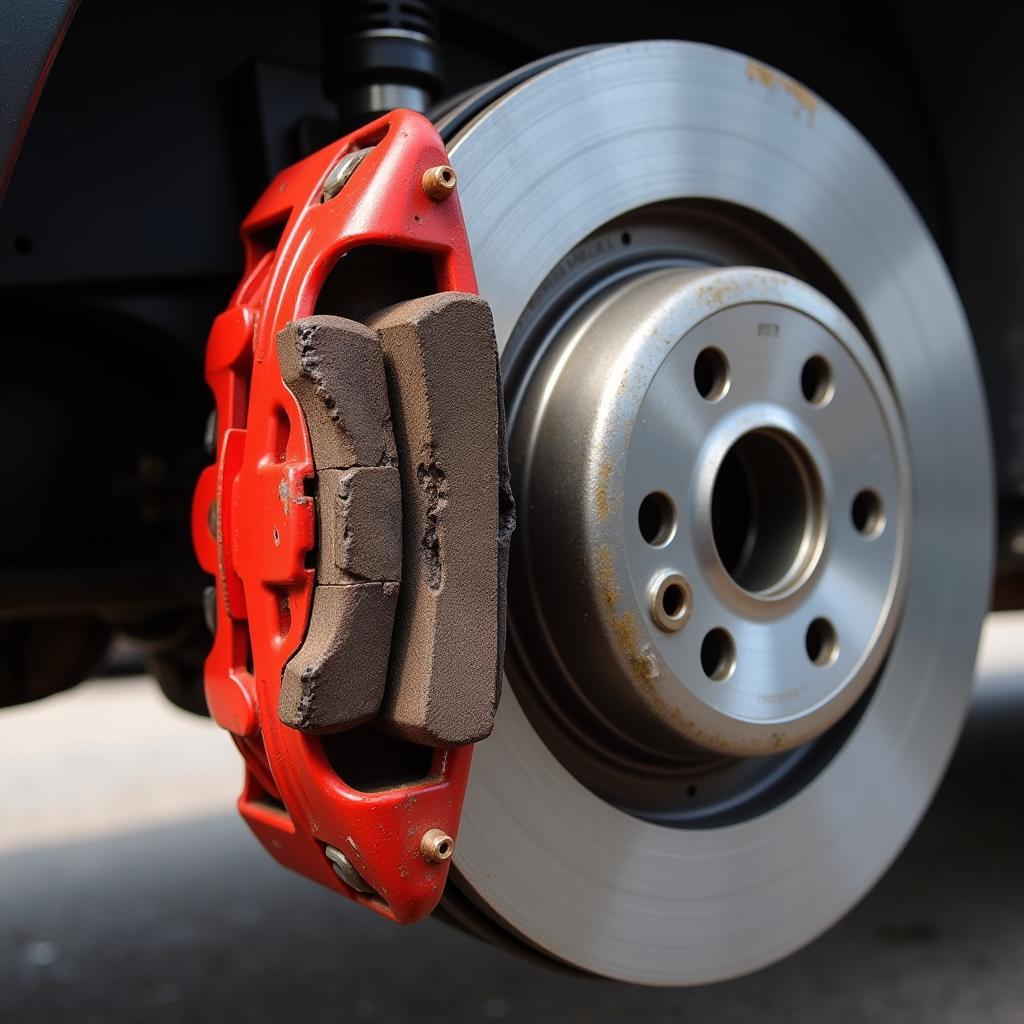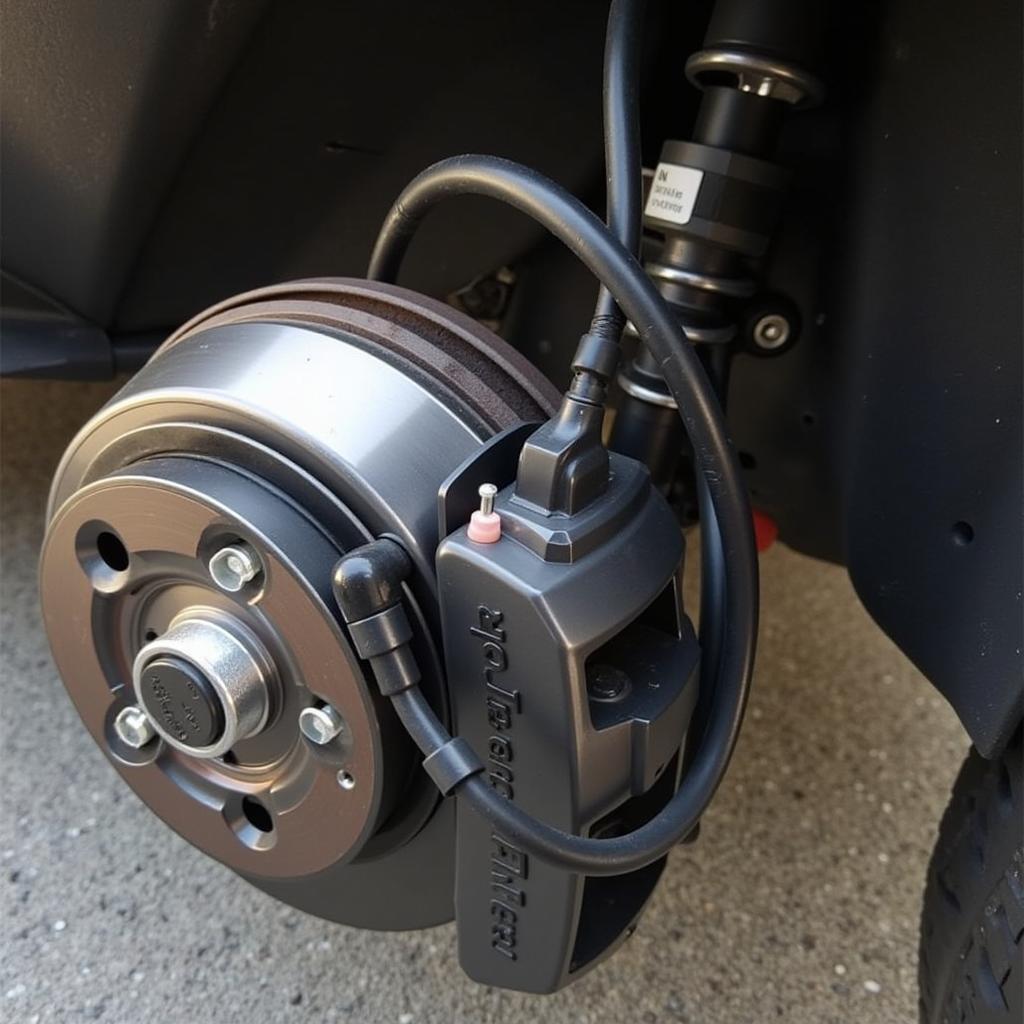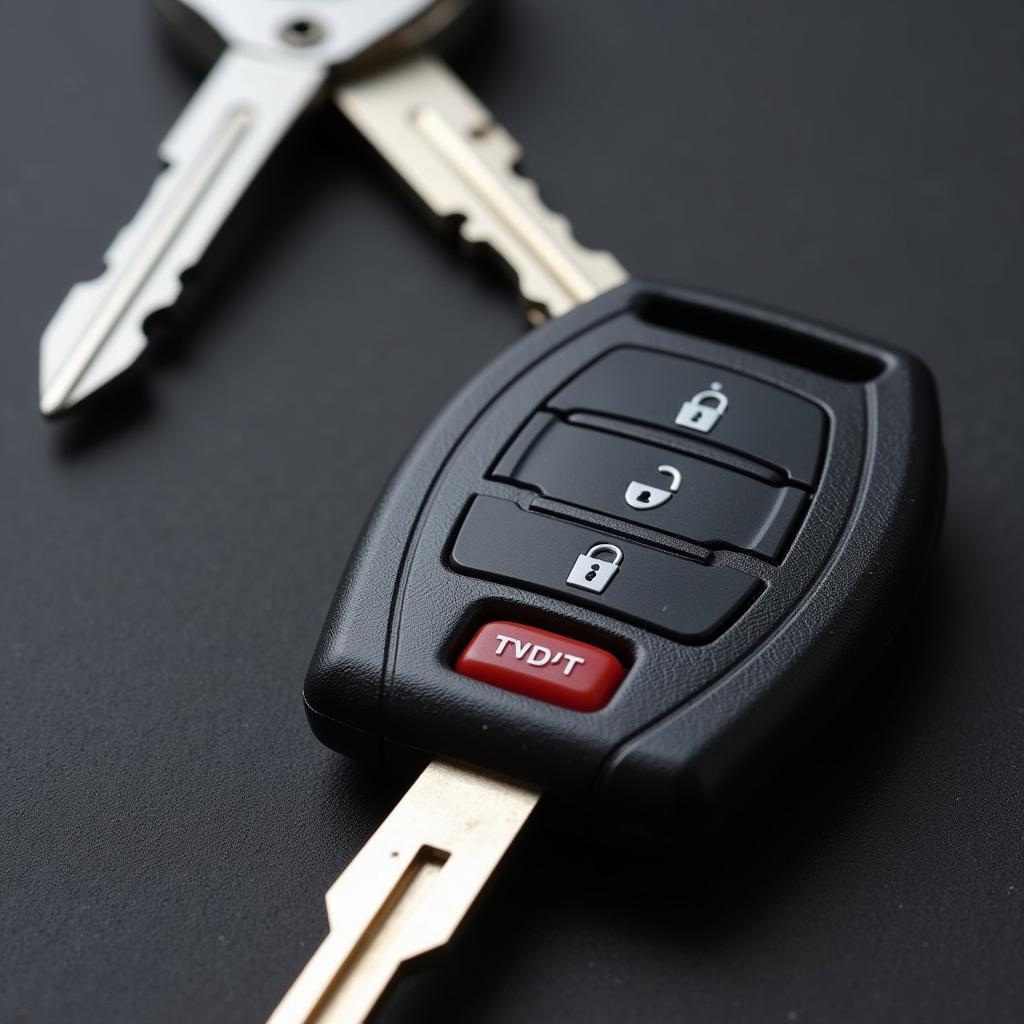The dreaded brake pad warning light on your Mercedes dashboard. It can strike fear into even the most seasoned driver. But don’t panic! While it’s never a good sign to ignore a warning light, understanding the reason behind it is the first step to a solution. This comprehensive guide dives deep into the intricacies of the Mercedes brake pad warning light, offering practical solutions and expert insights to get you back on the road with confidence.
Understanding the Mercedes Brake Pad Warning Light
Your Mercedes is equipped with a sophisticated sensor system, constantly monitoring critical components, including your brake pads. When the brake pad warning light illuminates, it signifies one of two things:
- Worn Brake Pads: The most common reason for the warning light is that your brake pads have worn down to a point where they need replacement.
- Sensor Malfunction: In some instances, the sensor itself might be faulty, triggering the warning light even if your brake pads are in good condition.
 Worn Brake Pads on a Mercedes
Worn Brake Pads on a Mercedes
What to Do When the Light Turns On
Seeing any warning light on your dashboard can be disconcerting. Here’s a step-by-step guide on what to do when your Mercedes brake pad warning light comes on:
- Don’t Panic: First and foremost, stay calm.
- Assess Your Driving: If possible, pull over to a safe location and assess your braking. Do you hear any unusual noises while braking? Does the brake pedal feel different?
- Check Your Brake Fluid: Open the hood and check your brake fluid level. Low brake fluid can also trigger the warning light.
- Schedule an Inspection: Whether you suspect worn pads or a sensor issue, it’s crucial to schedule an inspection with a qualified Mercedes technician or a trusted mechanic specializing in German vehicles.
The Importance of Timely Brake Pad Replacement
“Ignoring your brake pad warning light is like ignoring a ticking time bomb,” says Master Technician, Hans Schmidt from Munich Autowerks. “Worn brake pads compromise your stopping distance, putting you and others at risk.”
Beyond safety, driving with worn brake pads can lead to:
- Damaged Rotors: The metal backing plate of worn pads can grind against the brake rotors, leading to costly repairs.
- Reduced Braking Performance: Worn pads diminish your car’s braking efficiency, especially in emergency situations.
- Increased Repair Costs: Ignoring the warning light can exacerbate the problem, leading to more extensive (and expensive) repairs down the line.
Can I Drive With the Brake Pad Warning Light On?
While you might be tempted to continue driving with the brake pad warning light on, it’s strongly advised against. Driving with worn brake pads jeopardizes your safety and can lead to more severe damage to your braking system.
Remote Diagnosis and Programming: The Future of Car Repair
In today’s technologically advanced world, even car repairs are entering a new era. Remote diagnosis and programming services, like those offered by specialized companies, can provide:
- Swift Diagnosis: Experienced technicians can remotely access your car’s computer system to diagnose the root cause of the brake pad warning light.
- Software Solutions: In some cases, a simple software update or reset might be all that’s needed to address the issue.
- Convenience: Remote services eliminate the need for a physical trip to the mechanic, saving you time and hassle.
“Remote diagnosis allows us to quickly identify the issue and often resolve it without the customer needing to bring their car in,” says Anna Petrov, a leading remote diagnostics engineer. “This is particularly beneficial for software-related issues that can often be addressed remotely.”
Mercedes Brake Pad Warning Light: FAQs
1. How long can I drive with the brake pad warning light on?
It’s not recommended to drive with the brake pad warning light on. Schedule an inspection as soon as possible.
2. How much does it cost to replace Mercedes brake pads?
The cost varies depending on the model and your location, but expect to pay between $200 to $500 per axle.
3. Can I replace Mercedes brake pads myself?
While it’s possible, it’s recommended to have a professional handle brake pad replacements, especially on a luxury vehicle like a Mercedes.
4. How often should I get my Mercedes brakes checked?
It’s a good practice to have your brakes inspected annually or every 10,000-12,000 miles.
5. Can I use aftermarket brake pads on my Mercedes?
While aftermarket options are available, it’s generally recommended to use genuine Mercedes-Benz brake pads to ensure optimal performance and longevity.
Don’t Ignore the Warning
Your Mercedes brake pad warning light is a crucial safety feature designed to keep you safe. Don’t ignore it. By understanding the causes, risks, and solutions, you can address the issue promptly and keep your Mercedes running smoothly for miles to come. Remember, when it comes to brakes, it’s always better to be safe than sorry.


